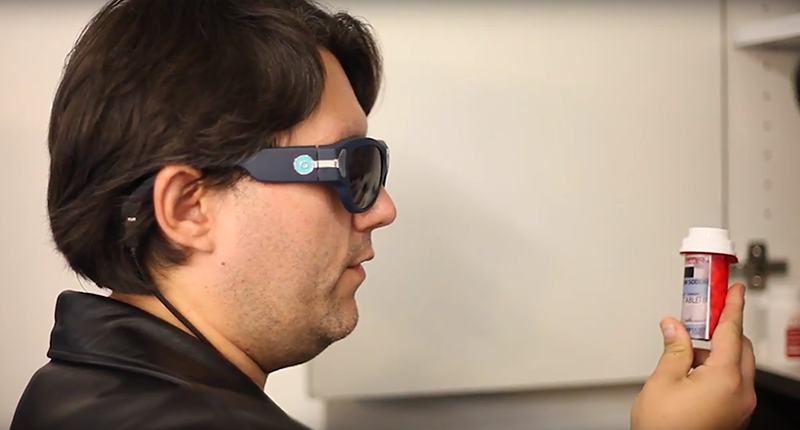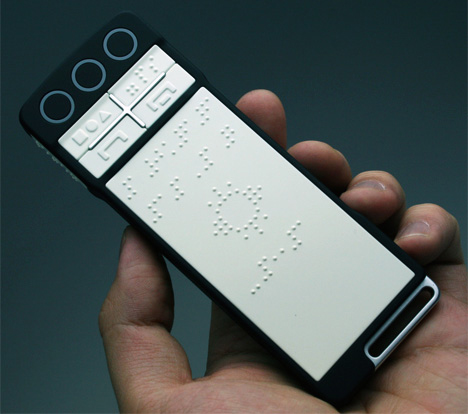Enhance Accessibility with Braille Tools and Notetakers
Enhance Accessibility with Braille Tools and Notetakers
Blog Article
Discover Ingenious Devices Developed for the Aesthetically Damaged
The development of cutting-edge devices for the aesthetically impaired stands for a considerable advancement in access and self-reliance. Technologies such as clever glasses with AI capabilities and mobile applications developed to provide acoustic descriptions are reshaping daily experiences for customers.
Smart Glasses for Navigating

Smart glasses developed for navigation are revolutionizing the means aesthetically damaged individuals engage with their setting. These advanced gadgets make use of a mix of electronic camera modern technology, expert system, and auditory responses to supply real-time info concerning environments. By using challenge detection systems, clever glasses can signal individuals to potential threats, enabling more secure wheelchair in both unknown and acquainted setups.
The integration of GPS modern technology even more enhances navigating capabilities, permitting users to get auditory directions as they relocate. This hands-free method not just promotes freedom however additionally empowers aesthetically impaired individuals to browse urban landscapes with raised confidence. Additionally, lots of smart glasses are furnished with attributes that identify sites and street indications, providing contextual details that improves the individual experience.
In addition, the growth of these devices is consistently advancing, with business functioning to enhance the precision of things recognition and expand the series of navigational attributes. As wise glasses end up being extra available and affordable, they hold the prospective to significantly transform everyday life for visually damaged individuals. Eventually, these cutting-edge devices represent a crucial action towards inclusivity, offering improved movement and a better sense of autonomy for individuals browsing the world around them.

Mobile Apps for Daily Living
Exactly how can mobile applications boost the day-to-days live of visually impaired people? Mobile apps are changing the method aesthetically damaged individuals browse their environments, take care of day-to-day tasks, and gain access to details. These applications provide vital support through numerous functionalities, promoting freedom and improving lifestyle.
Numerous cutting-edge mobile apps are designed especially for day-to-day living. For instance, apps like Be My Eyes connect visually impaired individuals with sighted volunteers by means of video clip calls, enabling them to obtain real-time aid with jobs such as reading labels or navigating strange spaces. Seeing AI, created by Microsoft, makes use of fabricated knowledge to define surroundings, checked out text, and identify objects, efficiently transforming a smart device right into a powerful tool for daily help.
In addition, navigation apps customized for the aesthetically impaired, such as Aira and BlindSquare, offer audio-based instructions and ecological info, allowing users to traverse their environments safely and confidently. Past navigating and instant assistance, mobile applications likewise support company and job administration, with features that help customers set reminders, develop order of business, and track consultations. In recap, mobile applications act as essential resources, encouraging aesthetically damaged individuals to lead even more independent and fulfilling lives.
Wearable Technologies for Aid
Empowerment with innovation is increasingly apparent in the world of wearable tools designed to assist aesthetically impaired individuals. These innovative tools integrate effortlessly right into daily life, boosting navigation and providing vital comments to customers. For instance, wise glasses geared up with video cameras can acknowledge faces and review message aloud, allowing individuals to connect more with confidence in professional and social setups.
An additional notable development is the web link usage of haptic feedback systems in wearable gadgets. These systems use resonances or various other responsive signals to communicate info about the customer's setting, such as barriers or changes in surface, boosting wheelchair and safety. Wearable innovations likewise include wristbands that link to mobile phones, alerting customers to notices article with subtle resonances, thus enhancing connection without dependence on visual cues.
As these innovations remain to progress, they are not just enhancing self-reliance for visually damaged people but also promoting a higher sense of inclusion in society. By linking the void in between obstacles encountered in day-to-day living and the capacity for freedom, wearable modern technologies work as essential tools in the quest for equal rights and empowerment for those with visual problems.
Sound Summary Tools
Sound description devices play an important role in boosting access for aesthetically impaired people, offering them with the capability to engage with aesthetic media. Mobility aids for visually impaired users. These devices provide narrated summaries of crucial aesthetic aspects in films, television programs, and live performances, making certain that individuals can completely comprehend the context and feelings conveyed via visuals
Audio summary can be integrated into various systems, including streaming services, movie theater screenings, and live cinema. Numerous prominent streaming services now consist of audio description as an availability feature, permitting audiences to select it easily. In addition to conventional media, specialized apps likewise exist, providing audio descriptions for art events, museums, and other social occasions.
The effectiveness of audio summary depends upon the skill of the narrators, who need to share visual details succinctly without detracting from the original sound. Developments in this area are additionally leading the method for more personalized experiences, where individuals can readjust the degree of detail and pacing according to their preferences.
Braille Innovations and Tools
Braille innovations and devices have actually significantly transformed the means aesthetically impaired people communicate with text and info. Modern improvements have actually led to the development of versatile tools that improve literacy and freedom among users.
Furthermore, mobile Braille notetakers incorporate typical Braille input with modern capabilities, promoting note-taking, scheduling, and file modifying on the go. Mobility aids for visually impaired users. These compact tools frequently feature text-to-speech capacities, linking the void in between Braille and acoustic info
In addition, ingenious Braille printers have actually emerged, allowing individuals to produce Braille tags, records, and instructional products effectively. This availability promotes higher involvement in expert and educational environments, inevitably promoting inclusivity.
In addition, study you can try this out into smart Braille technologies proceeds to broaden. Instruments that incorporate expert system are being discovered to supply real-time navigating support and contextual info, improving the user experience in varied settings. Overall, these innovations mirror a commitment to encouraging visually impaired people through modern technology, ensuring they can conveniently gain access to and involve with the globe around them.

Conclusion
The development of innovative tools for the aesthetically damaged dramatically improves self-reliance and high quality of life. Smart glasses, mobile applications, wearable innovations, audio description tools, and Braille developments collectively empower people by supplying necessary navigation support, environmental awareness, and improved analysis experiences. These modern technologies not only foster greater incorporation yet likewise promote freedom in day-to-day tasks, eventually adding to an extra easily accessible and equitable culture for aesthetically impaired people. Continued development in this area holds guarantee for further improvements.
As smart glasses end up being extra easily accessible and inexpensive, they hold the possible to considerably change daily life for aesthetically damaged customers. Mobile applications are reinventing the way aesthetically impaired customers navigate their settings, take care of day-to-day jobs, and access info. Applications like Be My Eyes attach visually impaired individuals with sighted volunteers using video telephone calls, allowing them to get real-time help with tasks such as reviewing tags or browsing unknown rooms.Additionally, navigation apps customized for the aesthetically damaged, such as Aira and BlindSquare, supply audio-based directions and ecological information, allowing individuals to traverse their environments securely and with confidence.The innovation of innovative tools for the visually damaged dramatically boosts independence and quality of life.
Report this page